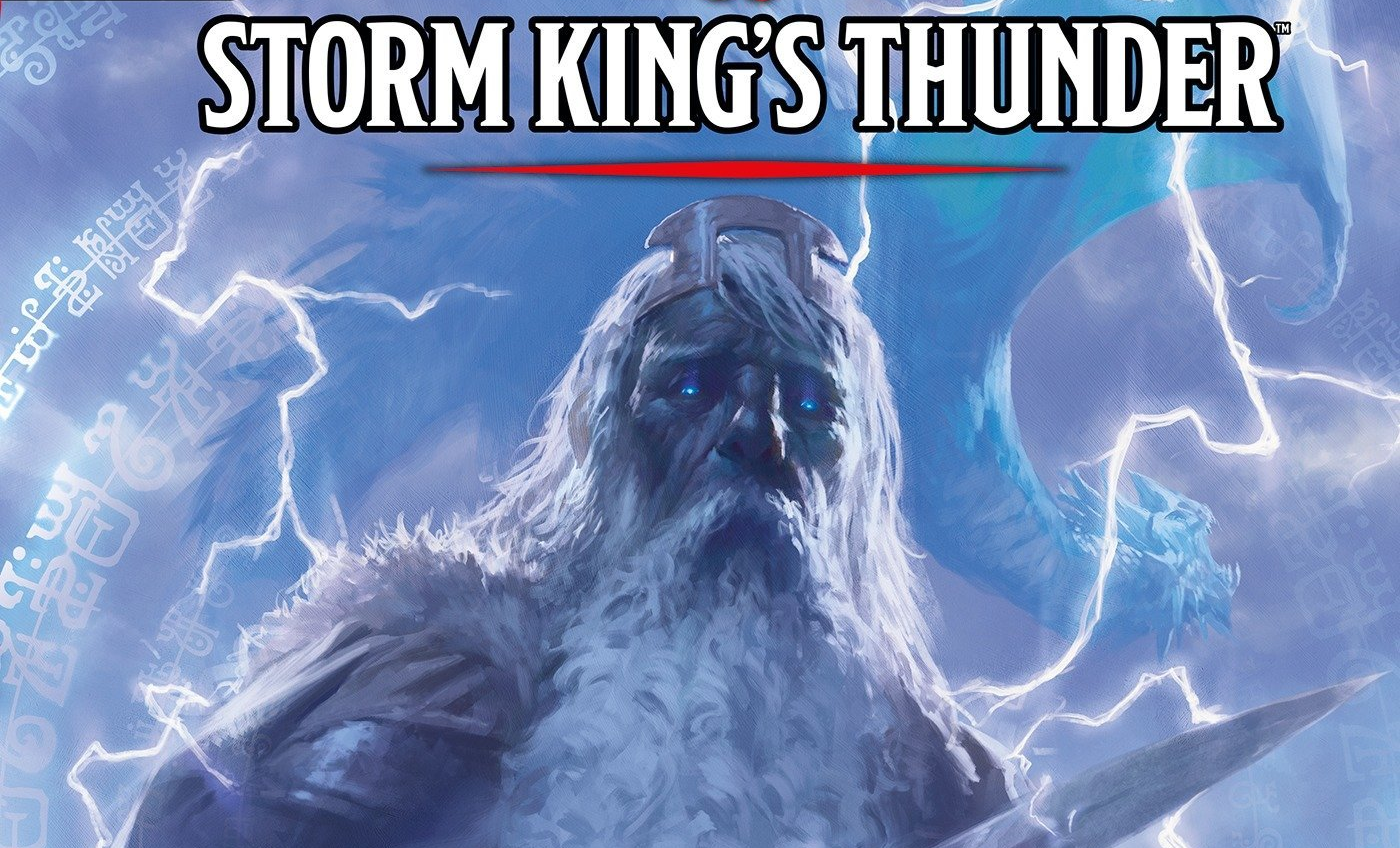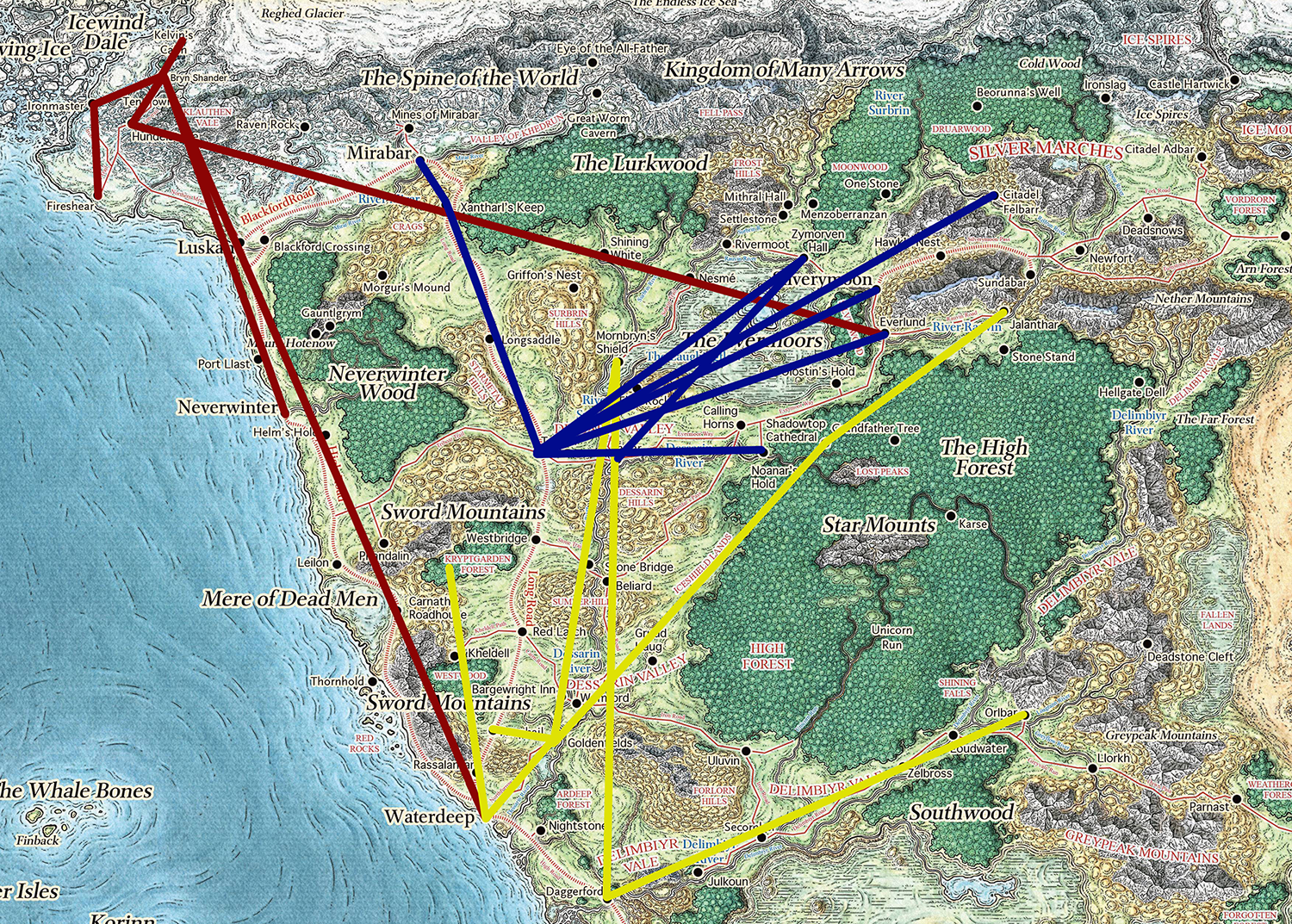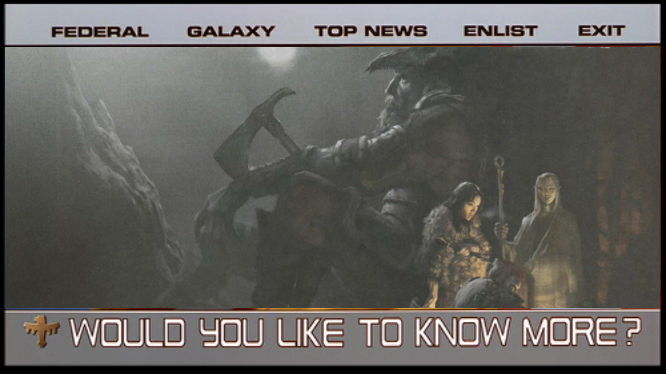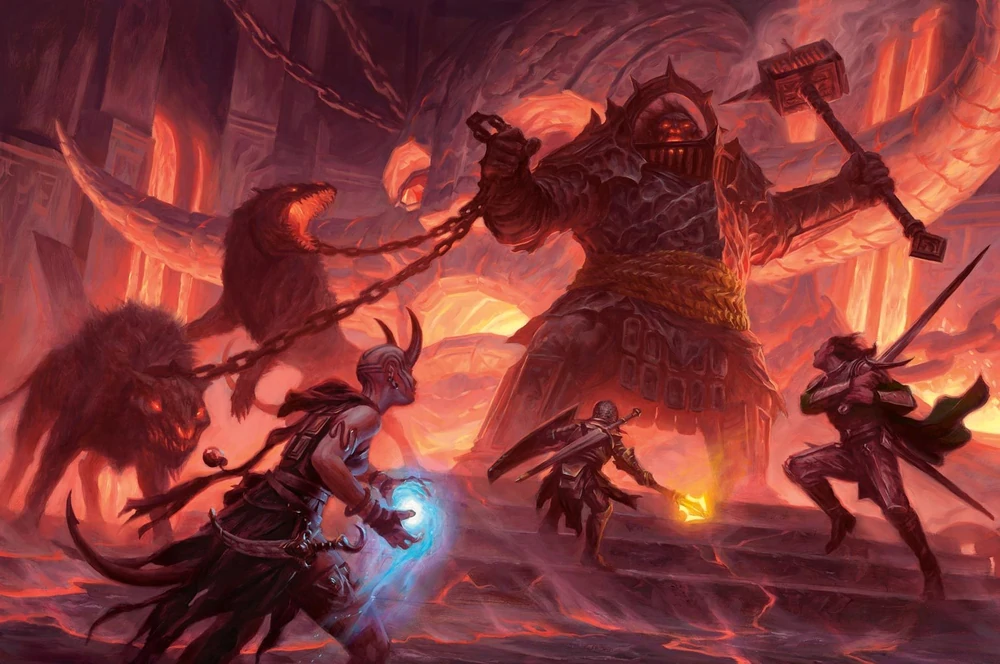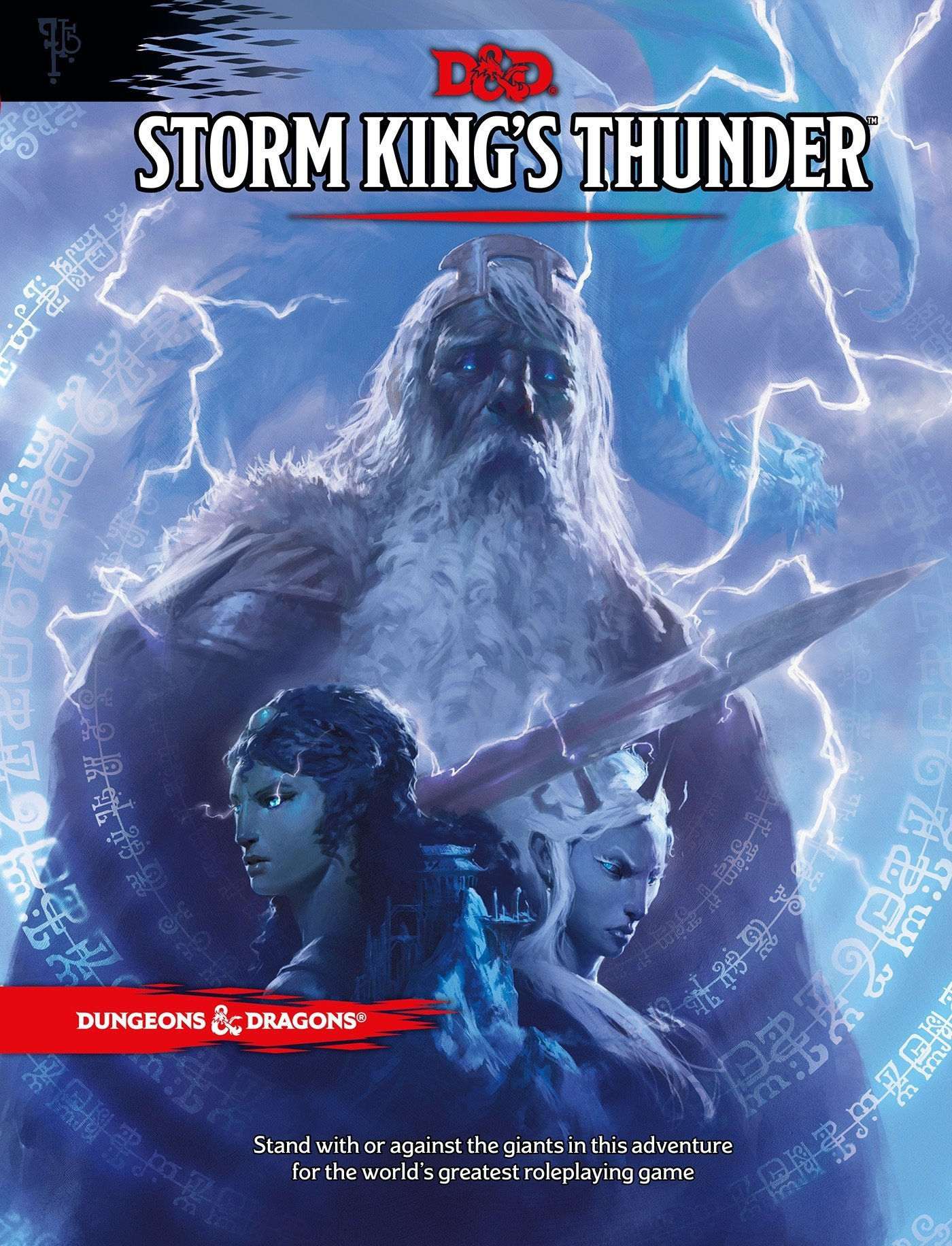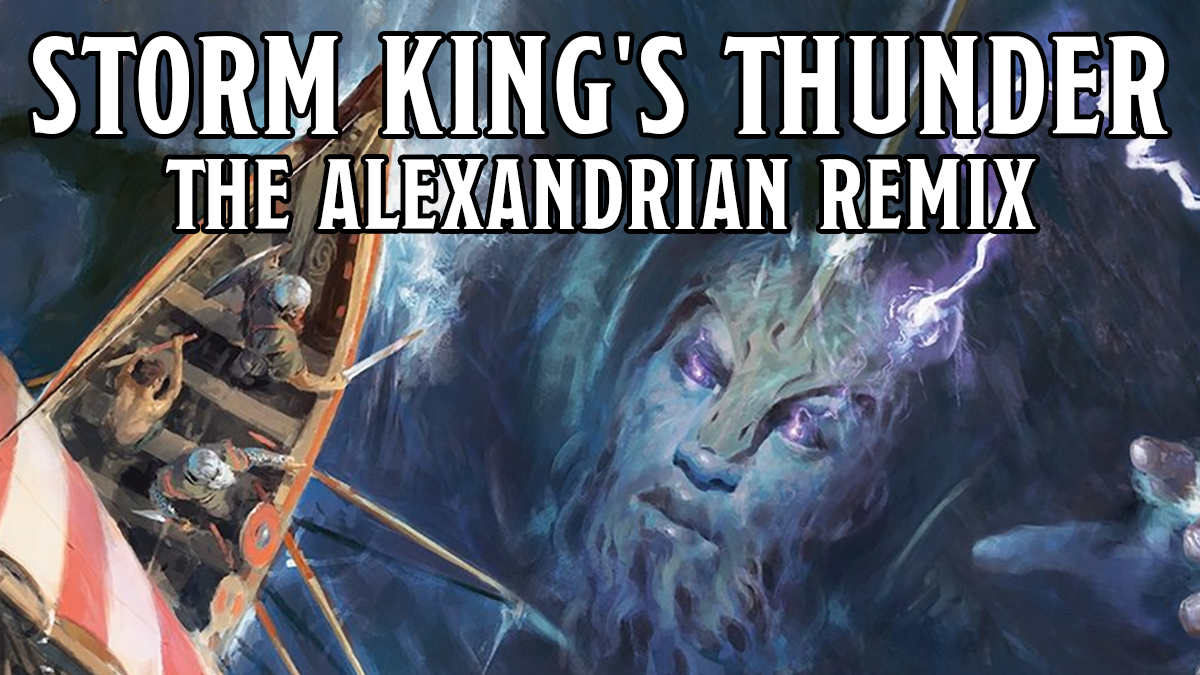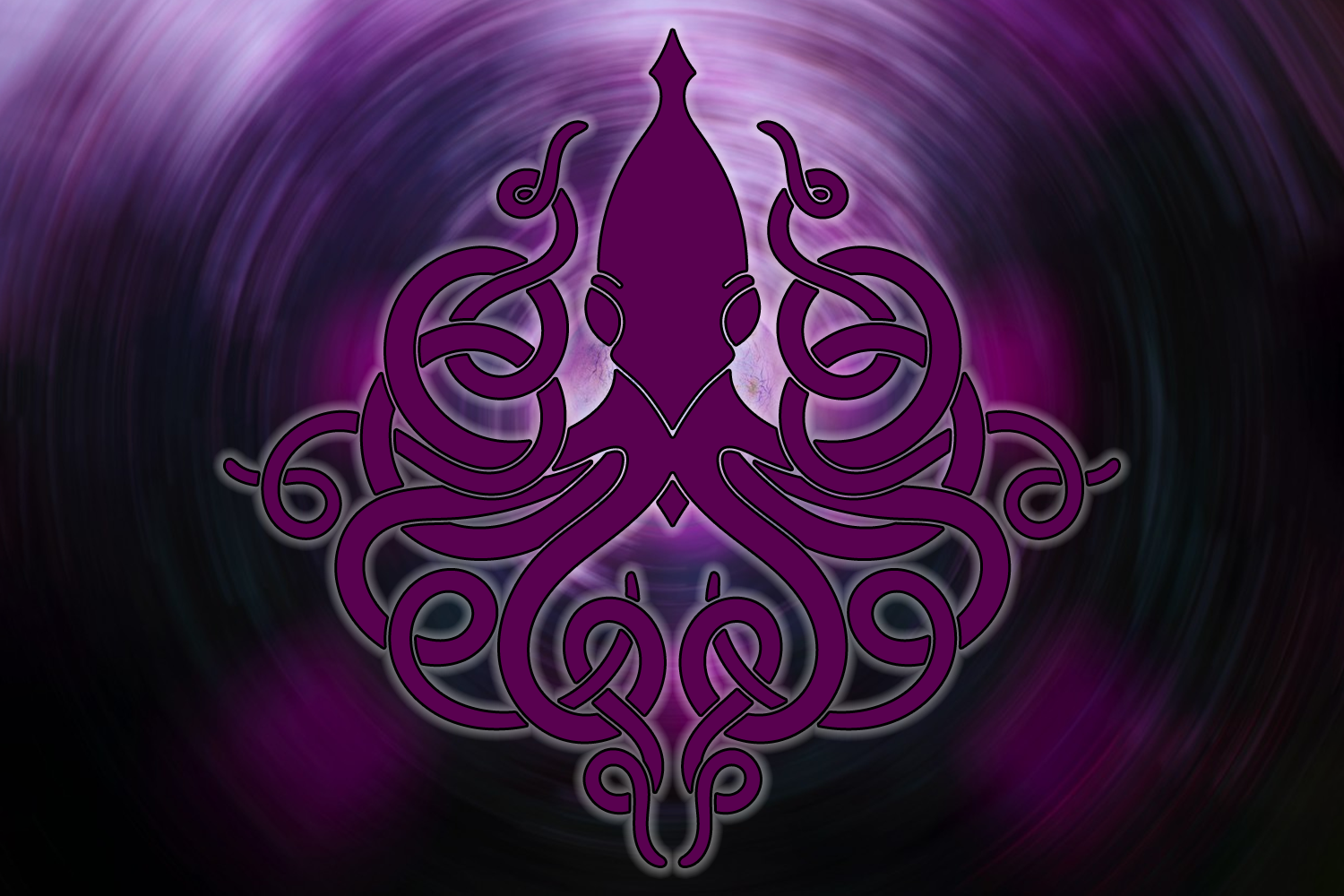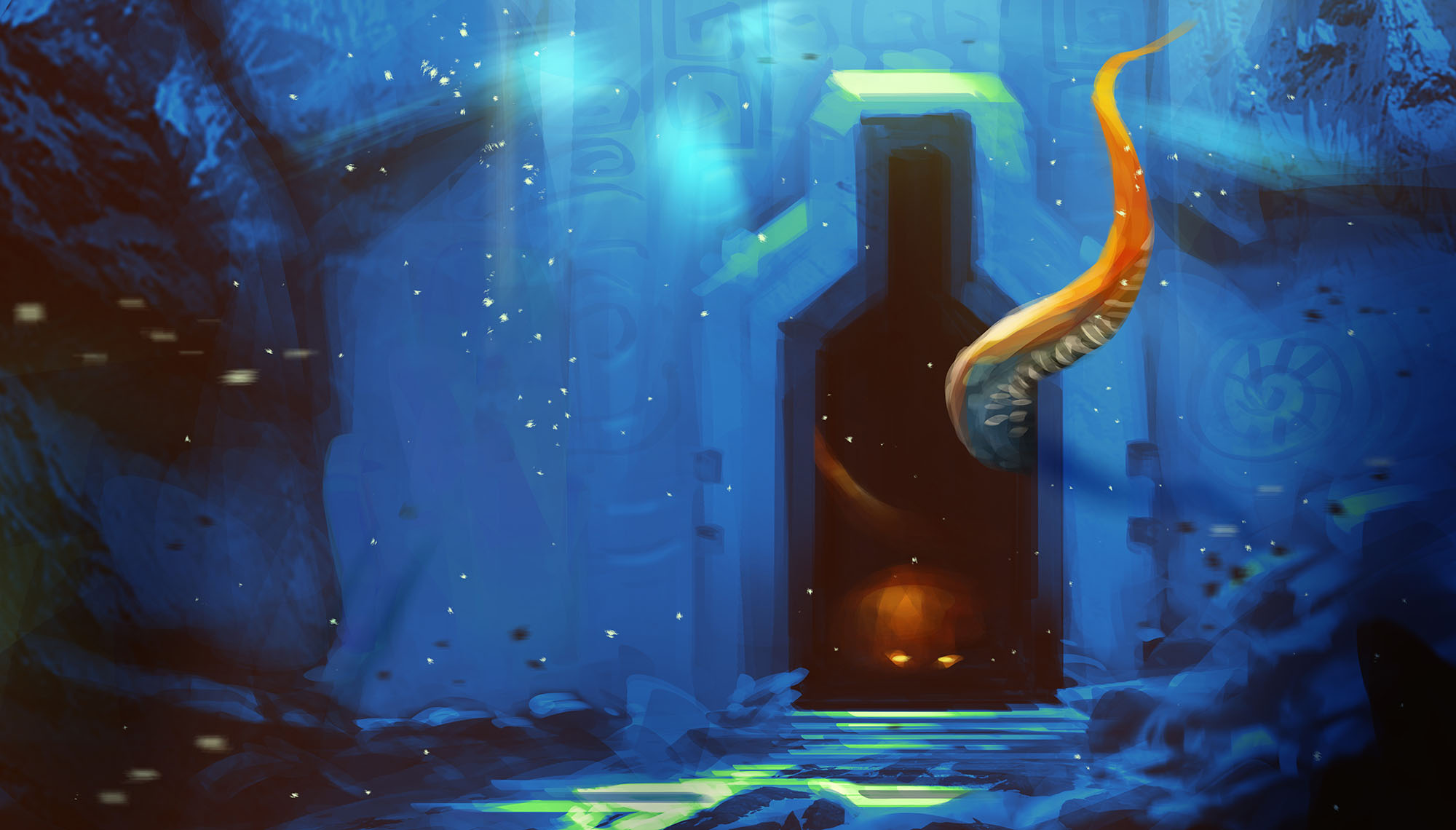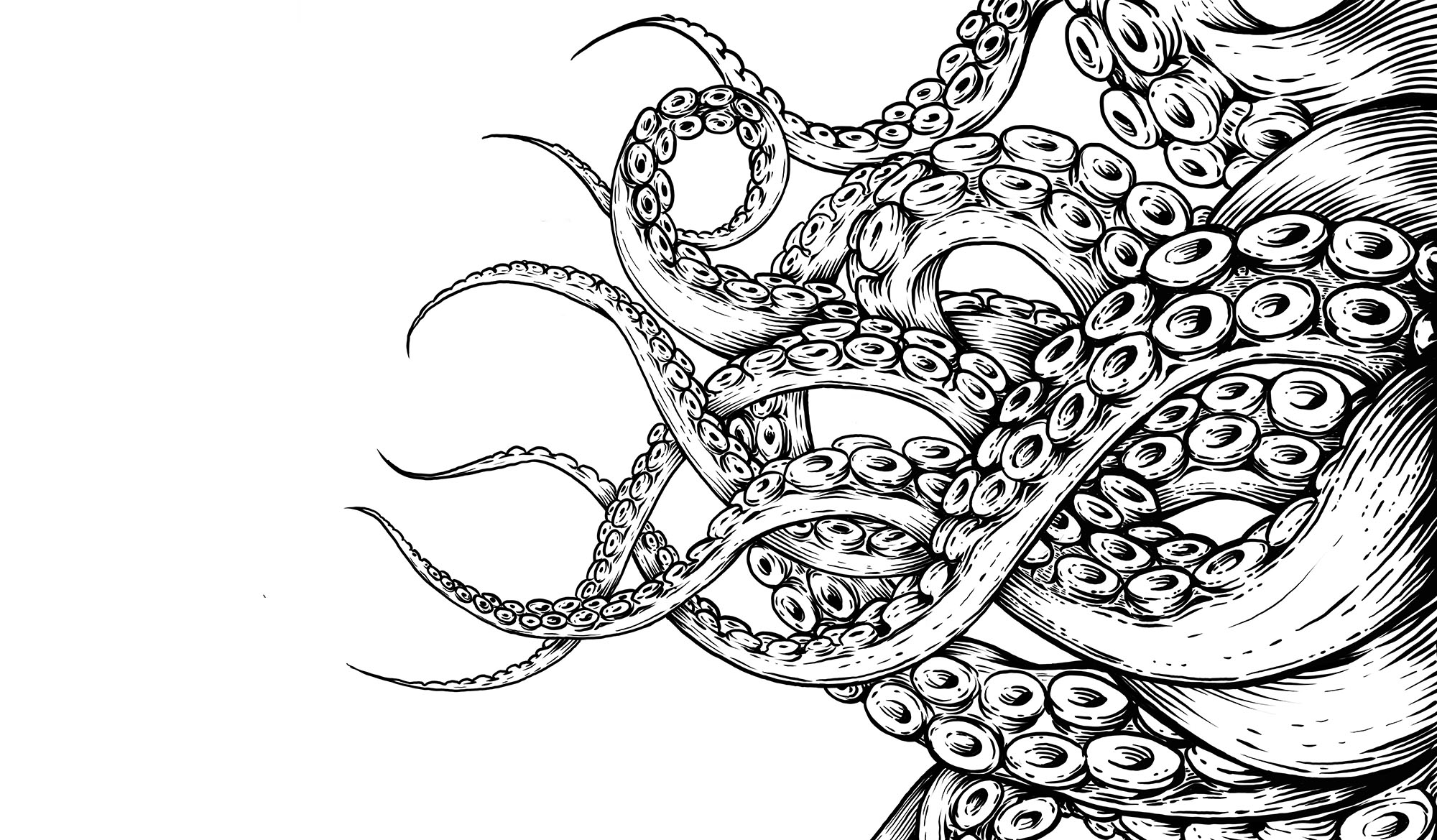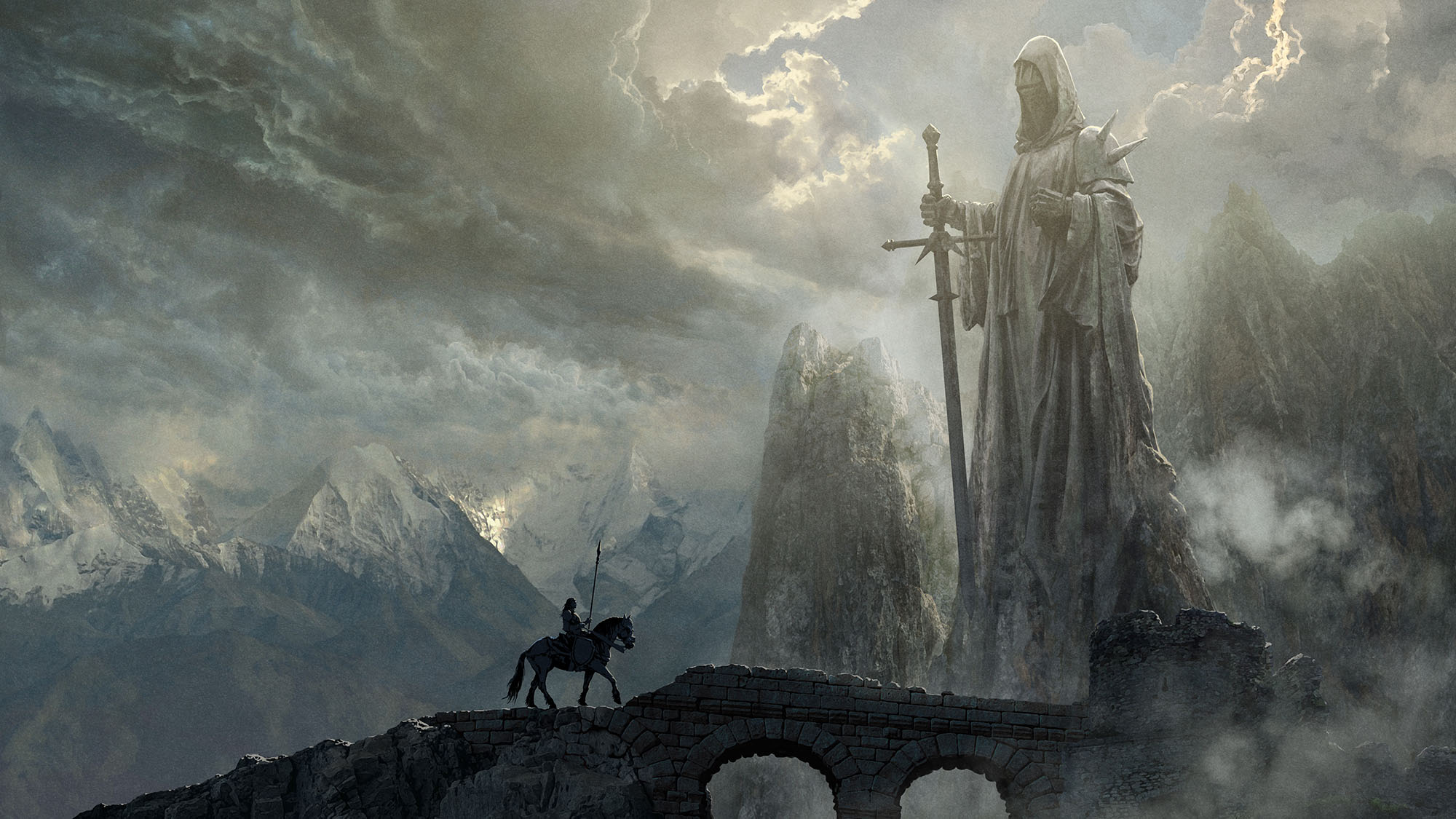SPOILERS FOR STORM KING’S THUNDER
Personally, I’m a sucker for the core concept of Storm King’s Thunder. A War Against the Giants campaign has been on my bucket list for many a year now, so the premise of giants beating the war drums is basically custom made for me.
The basic premise here is that Annam the All-Father, god of the giants, is upset that the giants did jack-all to stop Tiamat’s machinations during the Tyranny of Dragons campaign. So he dissolves the Ordning — the divinely decreed feudal(?) order which keeps giant society in order. This is a little vague in the book, but here’s how I think of it: Imagine that the divine right of kings was actually real; the legitimacy and authority of political leadership ultimately derives from the fact that a god said, “That guy is in charge.” And then one day the god shows up and says, “Not any more. None of y’all need to pay taxes.”
Pandemonium.
With the storm giants no longer king of the hill (giants), it’s a toss-up who’ll become the new King of the Giants. Ironically, this allows a draconic faction led by the blue wyrm Iymrith to infiltrate and decapitate the storm giant court, further destabilizing the situation. So now every giant is planning how to stomp their competitors, profit from the chaos, and/or prove that they should be the new king, and the conflict is boiling out across the Sword Coast and Savage Frontier.
Enter the PCs.
Storm King’s Thunder can then be broadly broken down into six phases:
Phase 1: The PCs deal with the aftermath of a cloud giant attack in the small village of Nightstone.
Phase 2: They follow a lead from Nightstone to one of three cities (Bryn Shander, Goldenfields, or Triboar), which is then attacked by giants while they’re there.
Phase 3: In the wake of the giant attack, they receive a plethora of plot hooks that will pull them towards various locations across the Sword Coast and Savage Frontier. This section of the campaign basically functions as a pointcrawl, with the PCs navigating the Forgotten Realms and running into additional plot hooks and mini-scenarios (most of which are themed to the giant troubles) as they travel.
(If you’re not familiar with a pointcrawl, the basic structure is a map of points connected by routes and keyed with content. PCs travel along the routes to get where they want to go, passing through points along the way and triggering the content keyed to those points. The pointcrawl in Storm King’s Thunder, although not referred to as such, is a pretty pure example of the form: The points are generally settlements on the map and the routes are literally the roads and trails connecting them.)
Phase 4: The PCs learn of the Eye of the All-Father, a powerful giant oracle. In exchange for recovering artifacts stolen by the Uthgardt barbarians, the oracle will tell the PCs that they need to travel to Maelstrom, the court of the storm giants.
Phase 5: The PCs raid one of five giant strongholds to retrieve a magical artifact they can use to teleport to Maelstrom.
Phase 6: The PCs journey to Maelstrom, forge an alliance with the storm giants, investigate the disappearance of Hekaton, the storm giant king, and (hopefully) rescue him. He then leads them to attack Iymrith’s lair.
The general “only the PCs can discover a hidden evil fomenting a war between giants and small folk” is clearly taking a thematic note from the classic GDQ series, but this is much more a conceptual riff than a Ravenloft-style reboot. It’s an ambitious campaign with epic stakes and a worldwide scope.
FRAGILITY
What my summary of Storm King’s Thunder plot hides, unfortunately, is that the transitions between the different phases of the campaign are incredibly awkward at best.
For example, let’s take a look at Phase 3. The basic idea here, as described briefly above, is that you rescue one of the cities in Phase 2 and receive a bunch of plot hooks that drive you to travel across the map. Here are what the hook lines look like for Bryn Shander (red), Goldenfields (yellow), and Triboar (blue):
Although drawn in straight lines (rather than along likely routes of travel), it should still be clear how following these leads will send the PCs crisscrossing the landscape. And, as they travel, they’ll be having encounters — from either scripted random encounters or keyed locations throughout the North — which will give them more leads to pursue. Pursuing those leads, of course, will lead to more encounters, which will result in more leads, which will… Well, you get the idea.
Eventually, in the course of these adventures, the PCs will discover the existence of the Eye of the All-Father and transition to Phase 4 of the campaign.
Unfortunately, there are some significant problems with this.
First, too many of the scenario hooks that transition the campaign from Phase 2 to Phase 3 are, for lack of a better word, boring. In Goldenfields, for example, they include:
- Deliver a letter for me.
- Come with me to visit my friend.
- Deliver a message for me.
- Deliver a letter for me.
I think of these as mail carrier hooks. There’s nothing inherently wrong with mail carrier hooks, but the structure of a mail carrier hook is so utterly devoid of purpose that it becomes crucial for the message itself to be of great import.
A good example of this in Storm King’s Thunder is the quest Darathra Shendrel gives in Triboar: Giants are invading! The Harpers must be warned!
That’s clearly meaningful. It matters. The PCs will feel important being asked to do that.
Unfortunately, most of the hooks in Storm King’s Thunder look like the one given by Narth Tezrin. “Hello! Heroes who just rescued this entire town! Could you deliver some horse harnesses for me?” This is almost demeaning. It’s clearly meaningless and there’s absolutely no reason why the PCs or the players would care about this.
The lackluster quality of these hooks is then exacerbated by the fact so many of them just… dead end.
For example, Darathra Shandrel tells the PCs to bring urgent word to the Harpers of the threat of the Giants! When the PCs arrive, the Harpers… just don’t seem to care that much. So that which seemed meaningful suddenly isn’t.
Others just trail off without any explanation. In Bryn Shander, Duvessa Shane asks the PCs to carry a message to a ship called the Dancing Wave in Waterdeep. When they arrive, the PCs discover that the ship is missing! Storm King’s Thunder then spends several hundred words detailing how the PCs can hire a ship to go looking for the Dancing Wave and then… that’s it. No explanation of what they might find if they go looking. No explanation of what actually happened to the Dancing Wave.
This actually happens a lot in the book. In Goldenfields, for example, the PCs are sent to look for a missing druid. They’re sent to talk to someone who might have seen him. That person says, “Nope. Haven’t seen him in awhile.”
And, once again, that’s it. No clue what happened to him. No suspicion on the part of the writers that the PCs might want to keep investigating.
The problem perpetuates on a macro-scale at the other end of Phase 3: None of the PCs’ expeditions actually go anywhere.
They go to places in the North and they point to other places. Along the way they run into giants doing various things. And, logically, this should all be taking you some place: Your new faction alliances should give you anti-giant operations to pursue. You should slowly be piecing together clues and your investigation into the giants should ultimately lead you to the Eye of the All-Father and the next phase of the campaign.
But it doesn’t.
What happens instead is that, at some completely arbitrary point unrelated to anything to the PCs are doing, the DM is supposed to trigger an encounter with Harshnag, a friendly giant, who says, “Hello! The DM has sent me with the next phase of the campaign! Would you like to know more?”
We’ve looked at Phase 3 here (coming and going), but unfortunately this type of fragility is endemic to the whole campaign:
- Phase 1 ends with three mail carrier scenario hooks pointing to Bryn Shander, Goldenfields, and Triboar. But rather than giving the PCs the choice of which lead to pursue, the book instructs the GM to instead railroad them.
- The Phase 4 into Phase 5 transition is designed to loop so that the PCs can get multiple leads from the Eye of the All-Father in case something goes wrong and they can’t get the magical artifact they need from the first giant fortress they raid… except the adventure bizarrely slots in a cutscene where the Eye of the All-Father gets blown up so the PCs can’t go back there.
- Even starting the investigation in Phase 6 requires the PCs to get a clue from an NPC who is innately hostile to them. It then requires the PCs to reach several conclusions for which no clues are included at all, while the threadbare breadcrumb trail which does exist is peppered with gaping plot holes.
Perhaps strangest of all, the adventure doesn’t actually have an ending. The central goal of the campaign is “stop the giant attacks.” The rescue of Lord Hekaton and the death of Iymrith is presented — structurally, textually, and diegetically to the characters — as the way to achieve this.
But because Iymrith’s deception and Hekaton’s disappearance are not what broke the Ordning, there’s no logical reason to think that resolving either of those things will result in the Ordning being reformed and the crisis coming to an end. And, in fact, the book more or less concedes this in the “Adventure Conclusion” section on page 230.
CRASHING THE PARTY
Let’s back up and talk about Harshnag for a moment.
When he shows up and says, “Follow me to Phase 4!” this creates a giant-sized problem for Storm King’s Thunder.
Harshnag is a prototypical Realms NPC who is much, much cooler and much, much more powerful than the PCs and shows up to hog the spotlight.
Storm King’s Thunder at least briefly acknowledges the Harshnag Problem and attempts to solve possibly the least important part of it (combat balance) by having Harshnag literally patronize the PCs by pretending he’s not as powerful as he actually is (p. 120):
Harshnag tries not to dominate combat if it means making his smaller compatriots feel inferior. He doesn’t want to be seen as a showoff. He can reduce his combat effectiveness in the following ways:
• He makes one attack on his turn instead of two.
• He uses the Help action to aid a character’s next attack against a foe. […]
• He does nothing on his turn except taunt an enemy who might otherwise attack a character. Assume the effort is successful and the target switches it attention to Harshnag, unless the character insists on being the target of that threat.
I sure hope no one dies while you’re jerking off, Harshnag.
After that half-hearted effort, Storm King’s Thunder gets back down to the work of completely mishandling a powerful NPC ally. We can start with the railroad doors to the Eye of the All-Father that are needlessly designed so that only the NPC can effectively open them and then eventually culminate with an NPC-focused cutscene where the PCs are turned into mute bystanders while Harshnag solos Iymrith.
(The adventure is so insistent on this that it will literally KILL A PC rather than let them try to participate in the cutscene.)
For a detailed explanation of why this sort of thing is a terrible idea, check out How NOT to Frame a Scene. But the key thing is that, while having a much more powerful PC show up is not inherently bad, there are generally two maxims you want to follow:
- Make sure the game remains focused on the PCs.
- Use the NPC’s awesomeness as a way of establishing how awesome the PCs are.
Imagine Barack Obama shows up at your birthday party. In Scenario #1 he grabs a fistful of birthday cake, poses with people for selfies, and tells stories about the situation room when Osama Bin Laden was assassinated for the rest of the evening.
In Scenario #2, he comes over to you, throws an arm around your shoulder, and says, “This is a party I could not miss once I heard about <that cool thing you did last week>.”
Which Obama do you want at your birthday party?
Storm King’s Thunder struggles with this because Harshnag’s role in the campaign is not to hype the PCs up.
He’s here to tell them that everything they did in Phase 3 was a pointless dead end.
This is also a problem that the “ending” of the campaign has: After all of their epic adventures, the PCs are reduced to footsoldiers taking orders from an NPC.
DEUS EX AIRSHIP
With all that being said, I want to emphasize that the bones of Storm King’s Thunder are fundamentally really good, and there are quite a few clever things the designers do.
For example, at the end of Phase 1 as the PCs are leaving Nighstone, a cloud giant citadel that’s floating past spots them and flies down. It belongs to Zephyros, a cloud giant who is looking for the PCs because the DM… err, I mean STRANGE PLANAR ENTITIES have told him that he needs to give them a lift to the next part of the adventure.
This is a really cool moment.
Oddly, though, it’s not the only time this happens in the adventure. Later on, a random airship will swoop out of the air and declare that the DM… err, I mean A MYSTERIOUS DRAGON has sent it to give the PCs a lift.
So why does this happen?
The core of the campaign — Phase 3 — is spread across North Faerûn. Locations across this entire region are keyed so that the PCs can travel almost anywhere and (theoretically) encounter campaign relevant stuff. The trick, though, is that all of this material is:
- Keyed to the specific range of levels the PCs will be in Phase 3.
- Designed to funnel the PCs towards the Eye of the All-Father.
If they went overland from Nightstone to Bryn Shander at the end of Phase 1, for example, they’d encounter a bunch of stuff that (a) they’re not ready for and (b) assumes the continuity of the adventure is more advanced than it is.
So to avoid that problem, you have Zephyros show up to literally fly them over these locations. And later, after Phase 3, you give them an airship for the same reason.
If you were prepping a similar adventure for your home campaign, we could imagine keying material appropriate for Phase 2 for their journey and then, later, advancing or updating that key as their journeys continue. If the book had infinite space, we could similarly imagine stocking the entire pointcrawl multiple times with different material for each phase.
But since the book can’t be infinite in its size, this is a very clever structural trick to make it work.
GAZETTEER OF THE SAVAGE FRONTIER
Did you know that Storm King’s Thunder has a significantly more detailed write-up of Bryn Shander — the capital of Icewind Dale — than the one that appears in Icewind Dale: Rime of the Frostmaiden?
In fact, the hidden treasure of Storm King’s Thunder is that it contains an encyclopedic gazetteer of the Savage Frontier. Although there’s some overlap with the Sword Coast Adventurers Guide, Storm King’s Thunder’s location guide is almost identical in length to Sword Coast Adventurers Guide’s treatment of the Sword Coast. This makes Storm King’s Thunder an invaluable resource for any North-ranging Forgotten Realms campaign, whether you’re interested in an adventure about giants or not.
What’s great about the adventure tie-in, though, is that the gazetteer ends up studded with play-ready material. This is high-value stuff.
You can also flip this around. Because of how it’s structured, a good chunk of Storm King’s Thunder can basically be boiled down to a list of “terrible things that giants are doing.”
So if you’re running any campaign in the Forgotten Realms, you can use Storm King’s Thunder to supply what I refer to as Background Events — a second timeline of future events running in parallel with your PCs’ adventures. These are events that don’t directly affect the PCs, but which are nevertheless taking place and moving the campaign world forward.
In other words, you can take most of Storm King’s Thunder and just have it “running” in the background of your campaign: The world is large and there’s all this giant stuff that’s happening up north or one town over or whatever.
This sort of thing can add incredible depth to your campaign world. And, of course, if the PCs decide to follow up on any of this… well, hey! You’ve got a whole campaign book you can launch into!
On a related note, Storm King’s Thunder also does something similar in reverse, by dropping in little references to other published D&D campaigns: The crisis is triggered by Tyranny of Dragons. There are elemental lords from Princes of the Apocalypse actively seeking alliances. And so forth.
None of these require your group to have owned, read, or played the other adventures. But if you DO, then these are great little pay-offs and they make the world feel HUGE.
THREE CITIES, THREE FIGHTS
Something else that Storm King’s Thunder does very well are the three big giant fights in Bryn Shander, Goldenfields, and Triboar.
You may have gotten the impression that these fights are generic or interchangeable because of the campaign’s structure, but each location is well-developed and each encounter is crafted with very specific strategic goals and tactics. Each is full of unique interest, framed as large-scale strategic conflicts spread out across an entire community, in which the PCs will need to make tough choices about where and how to engage the enemy.
There is one caveat here, though.
The book doesn’t want the PCs fighting alongside NPC guards. This is most likely a deliberate choice to simplify the DM’s cognitive load and is mostly fine, except they accomplish it primarily by handing out idiot balls.
In Goldenfields, for example, they’re just explicitly incompetent:
There are no guards in the abbey, just a handful of acolytes. One of them, Zi Liang has scolded Father Darovik many times for putting the defense of Goldenfields in the hands of incompetent military leaders, which has made her somewhat unpopular.
With a little extra effort, however, some careful DMing can mostly work around these problems. In Goldenfields, for example, it’s not too difficult to set up the Chekhov’s Gun of The Guards Are Terrible Here.
Similarly, in Bryn Shander, all the guards at whatever location the PCs choose to fight are supposed to immediately run away (while all the other guards in town stay and fight). This is a problem because it flattens the strategic choices available to the players. (Instead of being able to choose how and where to reinforce the NPCs, and then dealing with the consequences of those choices, the PCs have no choice except to go all-in on the completely undefended location.) But about 90% of the solution is to just ignore the direction to have the NPCs run away and instead playing to find out.
CONCLUSION
I like Storm King’s Thunder.
It has weaknesses, but these are well-balanced by its ambition. If you can successfully pull the campaign off, it’s studded with amazing set pieces and gives ample opportunities to become one of the most memorable experiences you’ll have at the gaming table.
But that IF should not be casually ignored.
I’ve spoken to a large number of players and DMs about their experiences with Storm King’s Thunder, and a disconcerting number of them have reported campaigns which floundered, frustrated, meandered their way into boredom, or crashed spectacularly.
And these are problems directly connected to the shortcomings in Storm King’s Thunder’s design.
The one I would consider probably most significant is the campaign’s subtle-but-persistent deprotagonization of the PCs. Whether that’s all-powerful GMPCs, demeaning scenario hooks, or too-frequent “nothing you’re doing actually matters” dead ends, the result is demoralizing to the players and debilitating to the health of any long-term campaign. Why keep doing things if your actions keep getting characterized as meaningless?
The fragility of the adventure shouldn’t be ignored, either. There are far too many places where Storm King’s Thunder is (a) on rails and (b) can easily go hurtling off those rails with catastrophic results.
So, in many ways, Storm King’s Thunder is a needlessly frustrating and complicated campaign for the DM to run. But if you’re willing to tackle the challenge and can successfully thread the needle, I believe you will find it to be a highly rewarding one.
Style: 4
Substance: 3
Authors: Jenna Helland, Adam Lee, Christopher Perkins, Richard Whitters
Publisher: Wizards of the Coast
Cost: $49.95
Page Count: 256
FURTHER READING

